Sous Vide: Beef Tendon "Chicharrones"--2020
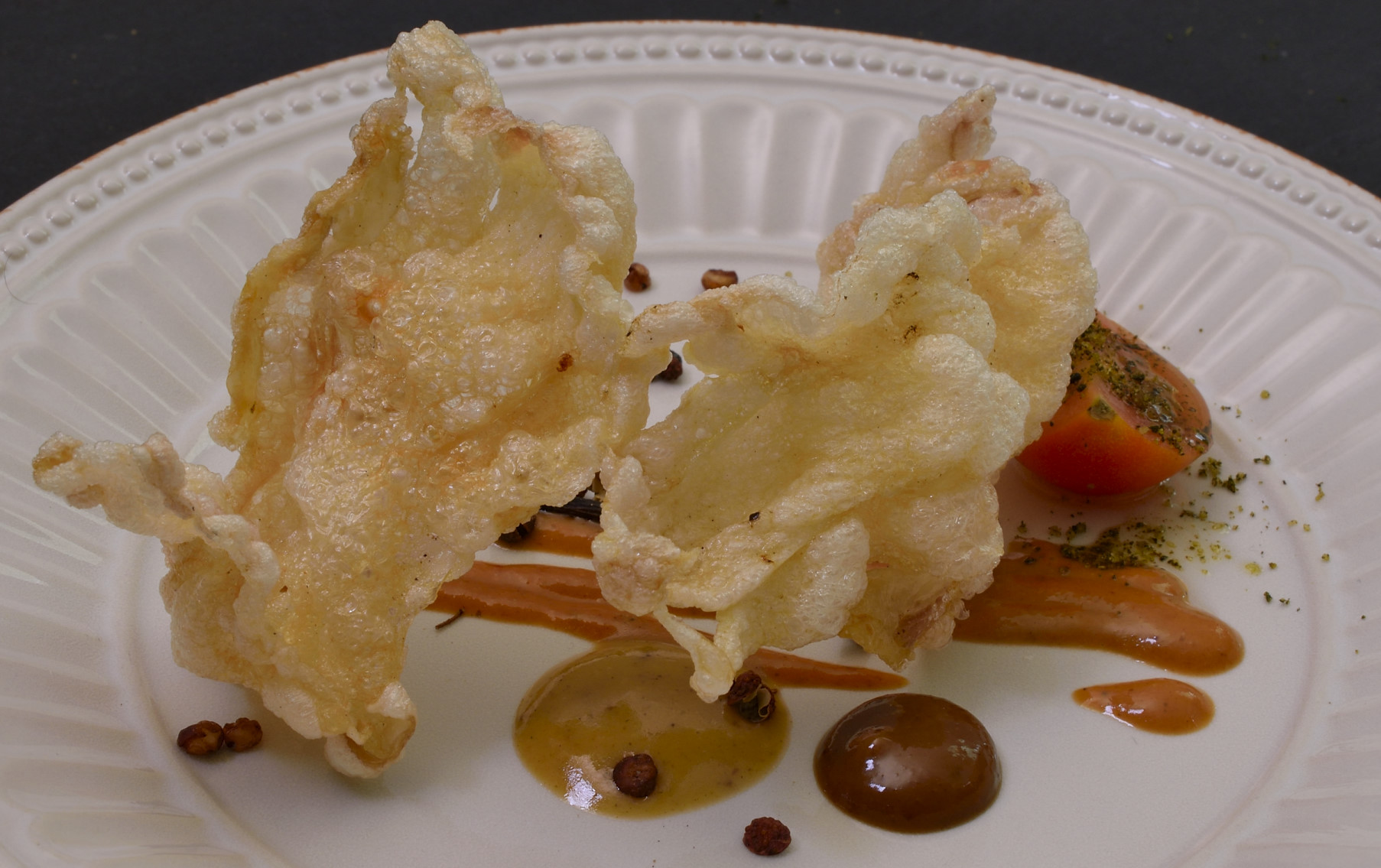
About
A common ingredient in Asian cuisine, Dim Sum and Vietnamese "Pho," beef tendons are slowly becoming familiar to westerners.
Ingredients
Beef tendons (commonly available in Asian markets), as needed. They usually weigh about 8 oz/450 g each.
Lard or vegetable oil for frying, as needed.
Equipment requirements
Immersion circulator, portable or stationary.
Heat rated container, minimum of 4 gallons/9 liters.
Heat rated sous vide bags.
Deli style slicer preferred, but optional.
Non stick cookie sheet or silicone mat.
Deep fryer or straight sided pan/pot, minimum 4"/10 cm deep.
Rubber or latex gloves.
Slotted spoon.
Instructions
Level of difficulty: 3
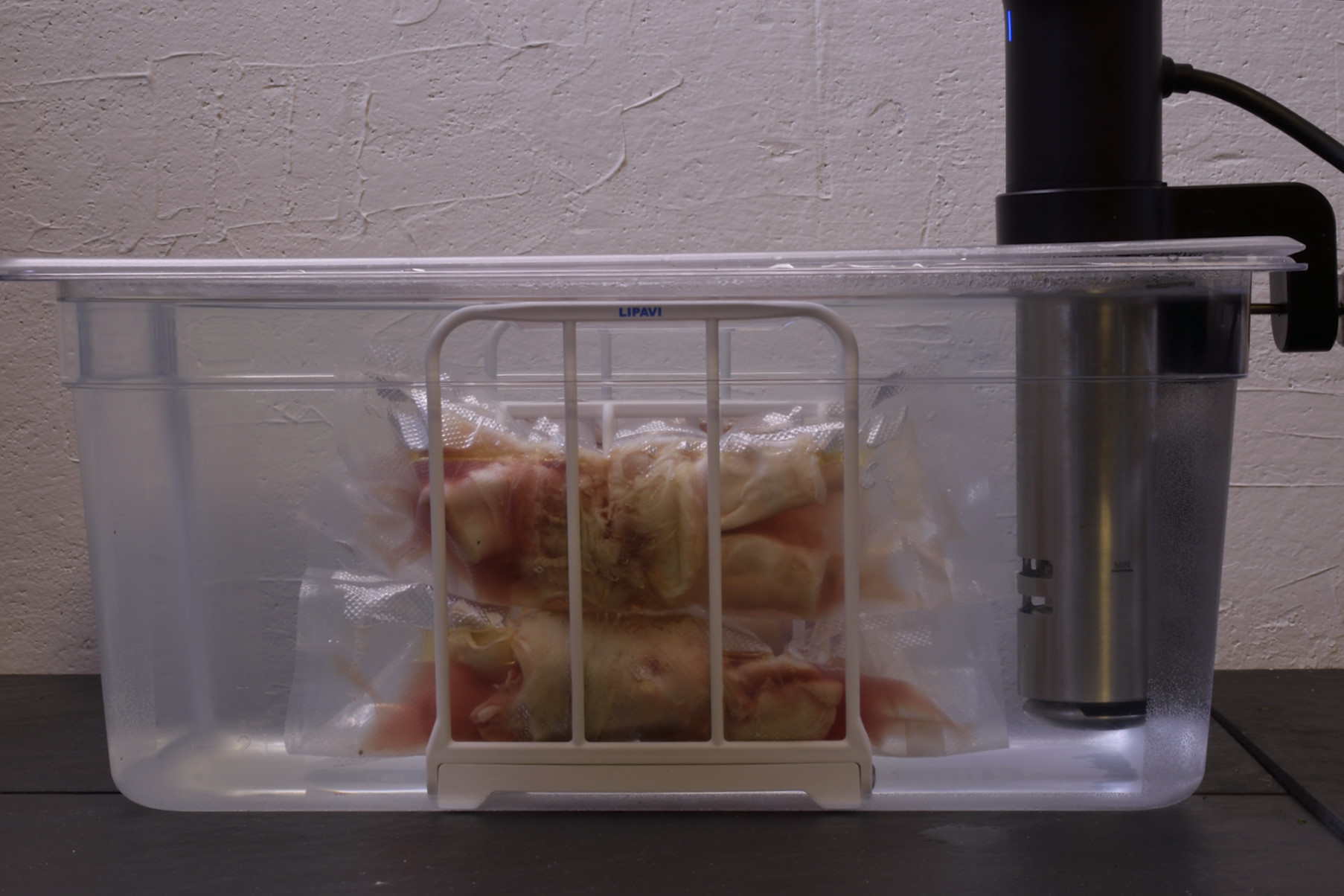
Procedure:
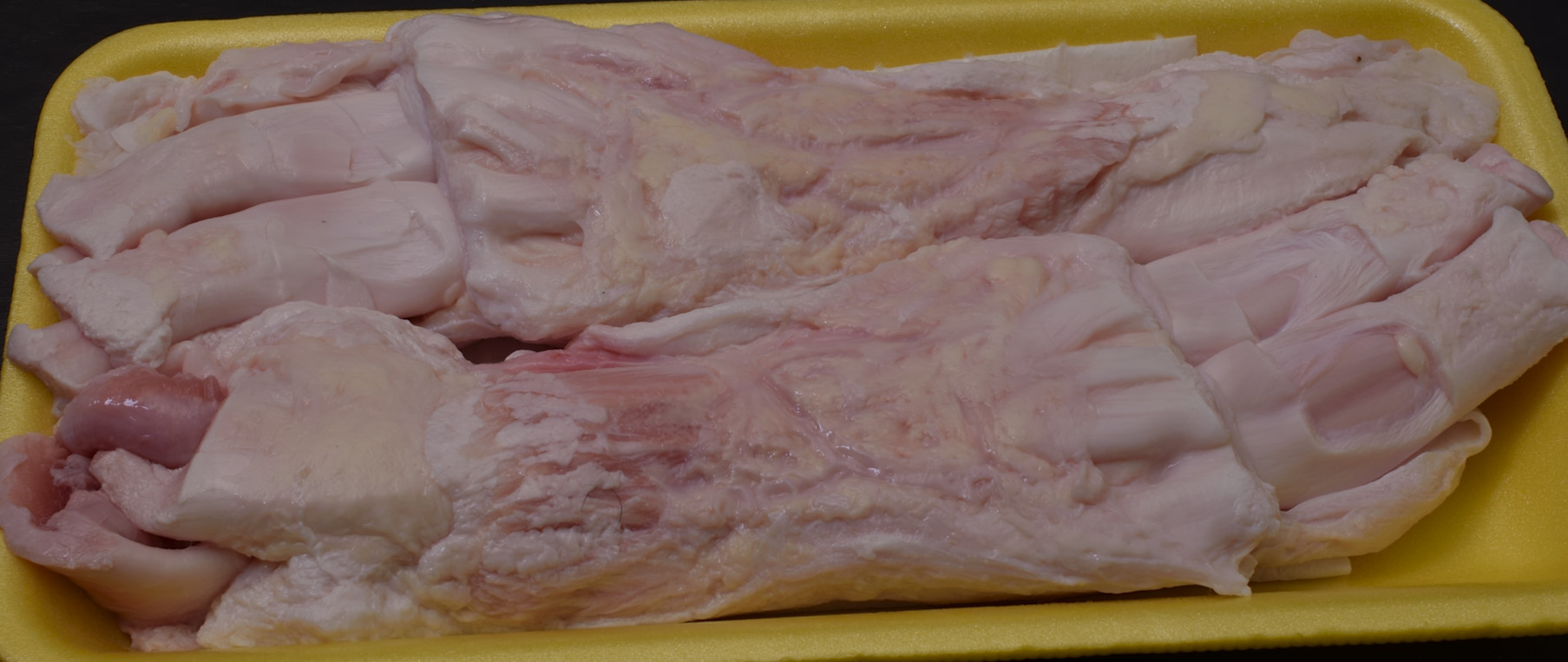 above: in the raw state.
above: in the raw state. 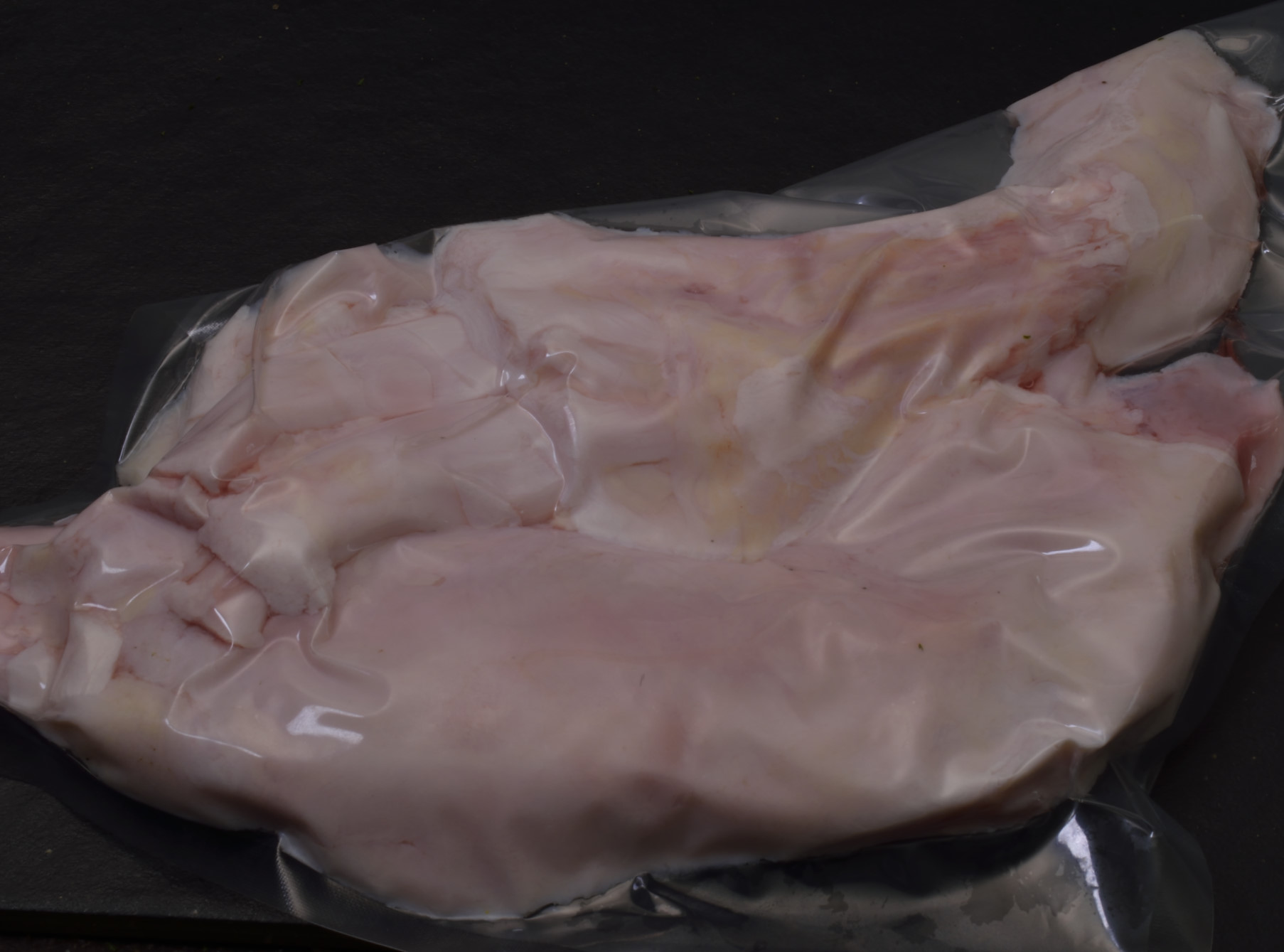 Stage the beef tendon(s) into dedicated vacuum bags. Seal and sous vide process at 150 F/66 C for 72-80 hours or until it passes the pinch test, explained HERE. Optional: Cut open the bag, drain excess juices, but do not remove the tendon from the bag. Place the loosely bagged tendon in a container to create a uniform shape--we used a sushi roll frame, but any stiff container will suffice. Place the entire assembly into a dedicated sous vide pouch and vacuum seal again. This will create the desired shape. Return the package to the sous vide bath and process for two more hours. This will re-pasteurize the contents. Shock in iced water to 70 F/21 C and refrigerate to 40 F/4 C. In this state, the beef tendon can be kept safely refrigerated for at least two weeks.
Stage the beef tendon(s) into dedicated vacuum bags. Seal and sous vide process at 150 F/66 C for 72-80 hours or until it passes the pinch test, explained HERE. Optional: Cut open the bag, drain excess juices, but do not remove the tendon from the bag. Place the loosely bagged tendon in a container to create a uniform shape--we used a sushi roll frame, but any stiff container will suffice. Place the entire assembly into a dedicated sous vide pouch and vacuum seal again. This will create the desired shape. Return the package to the sous vide bath and process for two more hours. This will re-pasteurize the contents. Shock in iced water to 70 F/21 C and refrigerate to 40 F/4 C. In this state, the beef tendon can be kept safely refrigerated for at least two weeks. 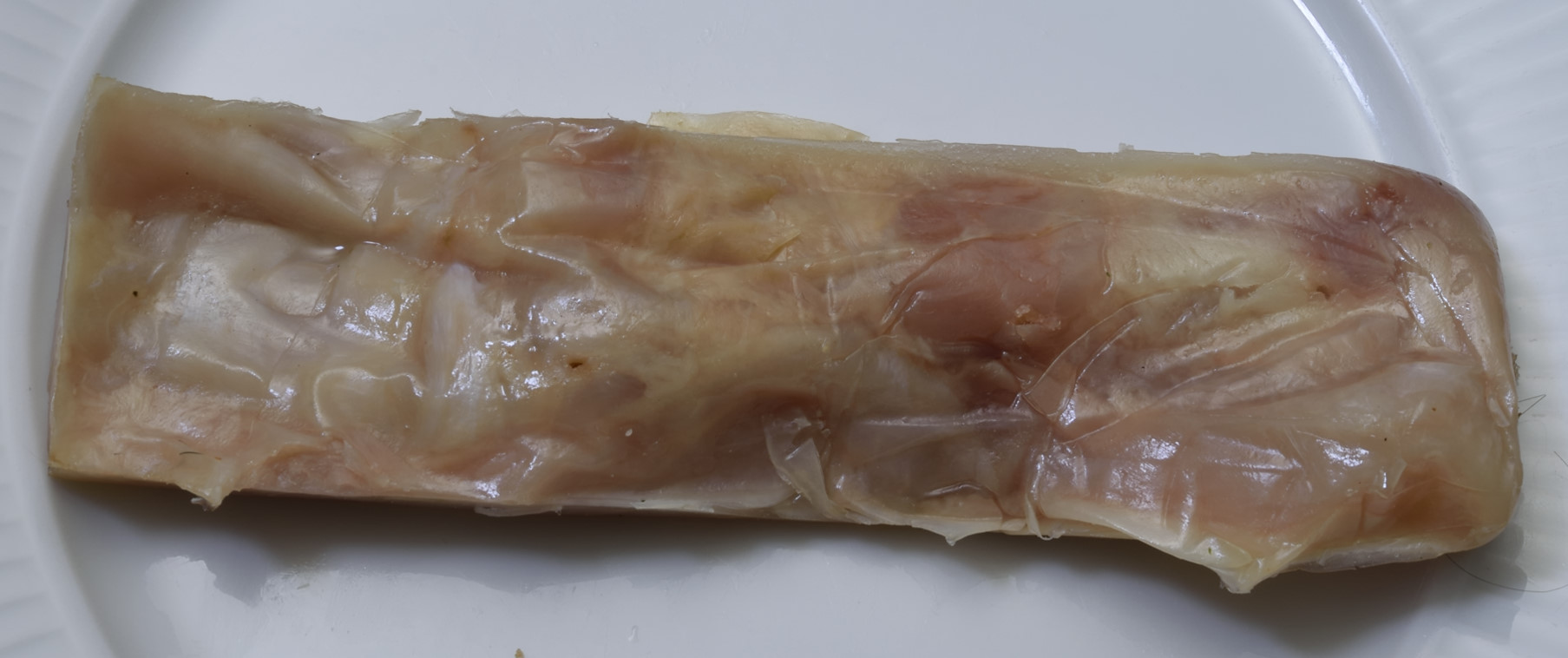 Remove the tendon from the frame/container and from the loose fitting bag.
Remove the tendon from the frame/container and from the loose fitting bag. 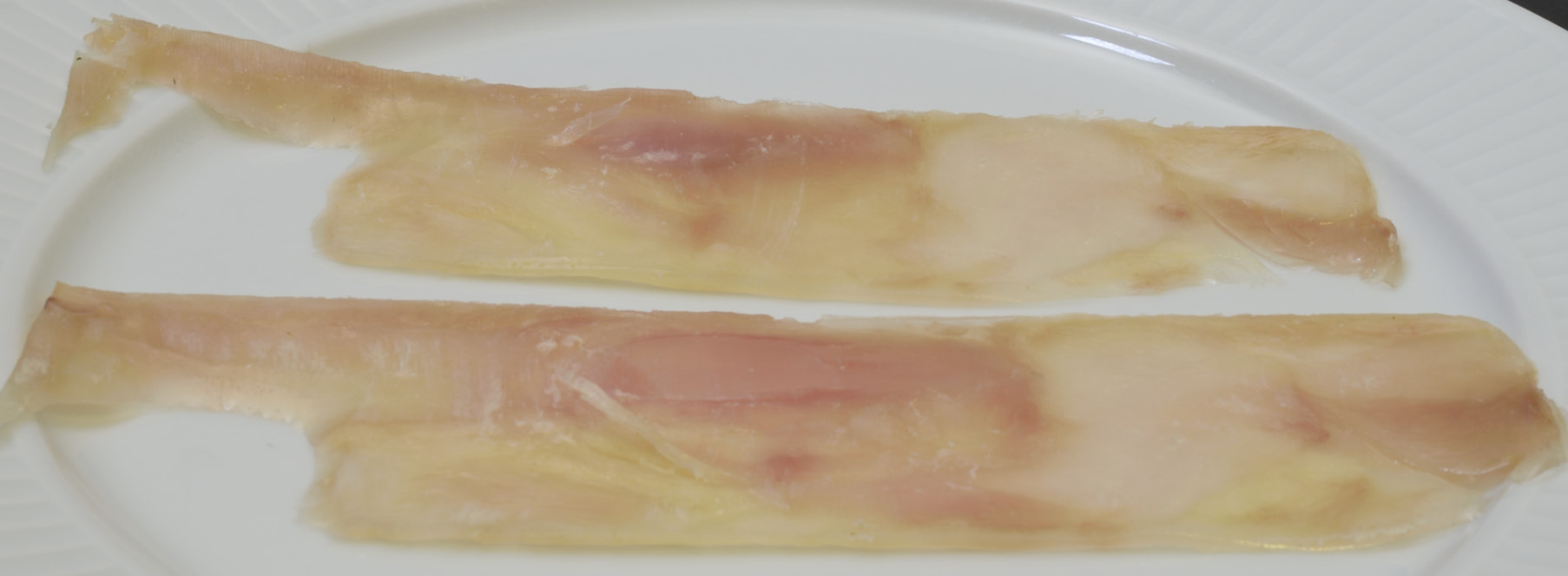 Slice the tendon as thin as possible without sacrificing the structural integrity of the protein. A deli slicer works great for creating large slices, but this step is still commonly performed by hand. Arrange the slices on the silicone mat or non-stick sheet pan so that they do not touch each other--once they become warm, they get quite sticky. Dry in a 170 F/77 C oven for at least 4 hours.
Slice the tendon as thin as possible without sacrificing the structural integrity of the protein. A deli slicer works great for creating large slices, but this step is still commonly performed by hand. Arrange the slices on the silicone mat or non-stick sheet pan so that they do not touch each other--once they become warm, they get quite sticky. Dry in a 170 F/77 C oven for at least 4 hours. 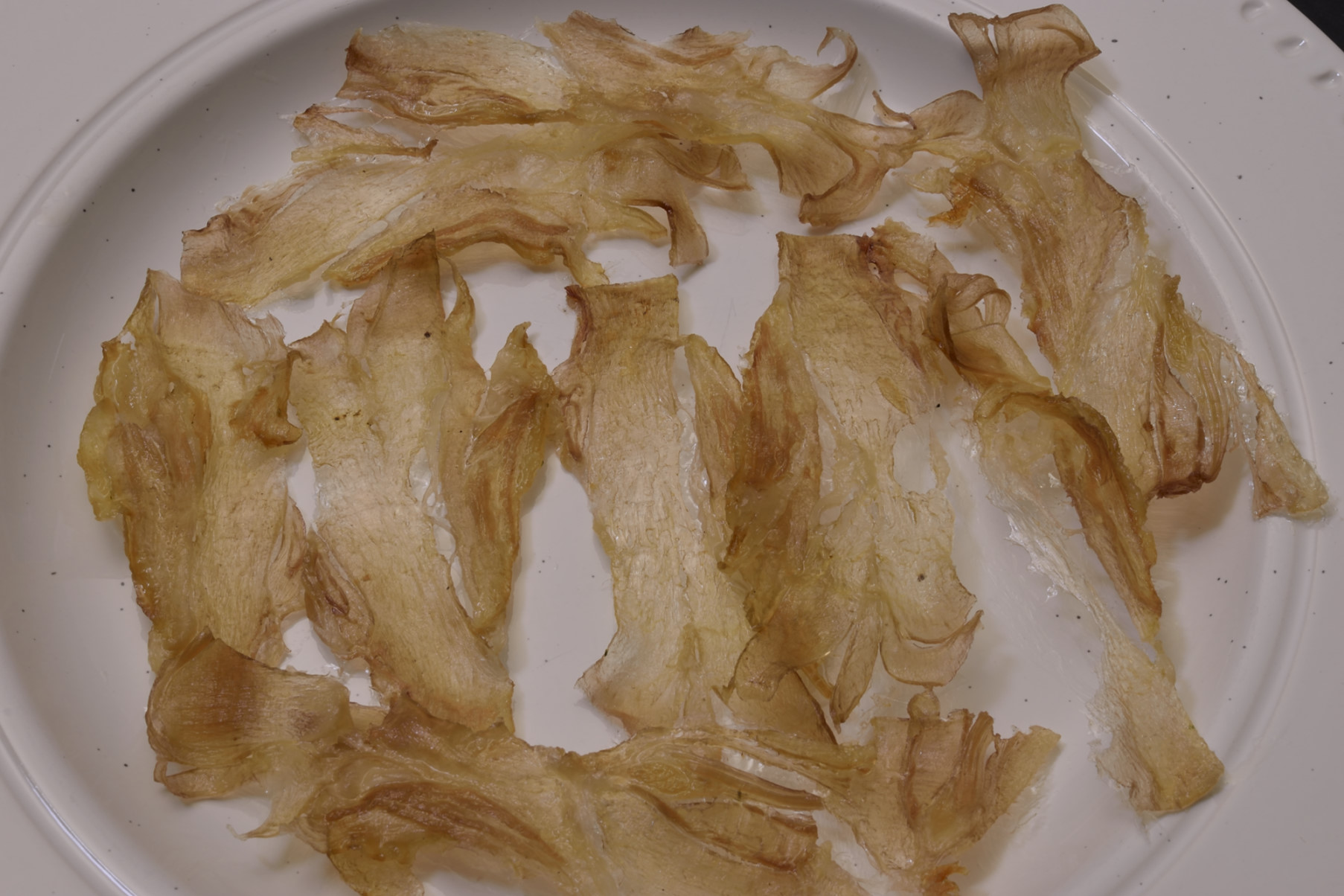 Once completely dried, the slices will look like this. They resemble cellophane in appearance and feel, with a slightly oily surface. There is very little fat in beef tendon, and the process forces it out of the tissue.
Once completely dried, the slices will look like this. They resemble cellophane in appearance and feel, with a slightly oily surface. There is very little fat in beef tendon, and the process forces it out of the tissue. 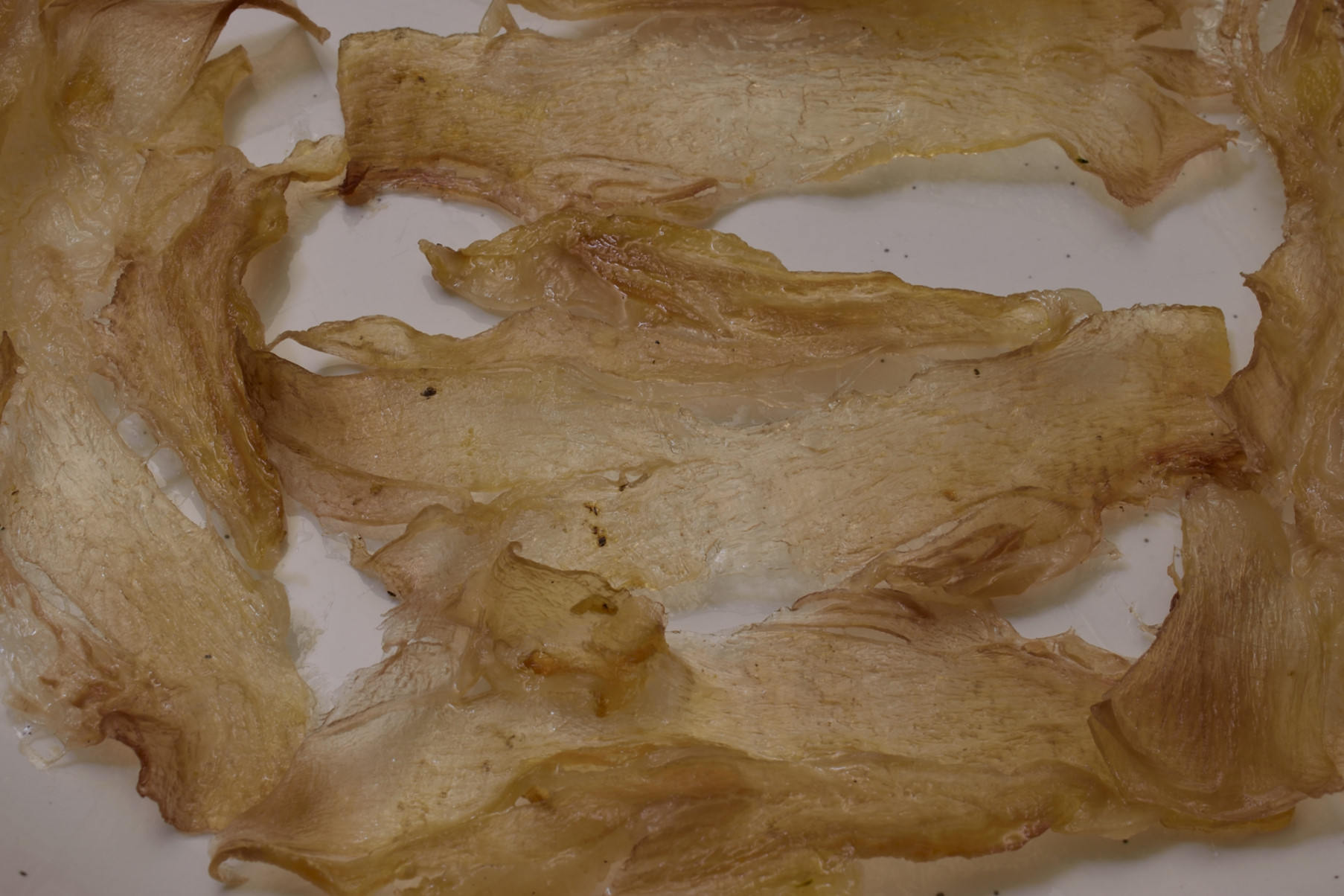 The oil in the pan should be approximately 2"/5 cm deep--the pan should be no more than half full for reasons of safety and convenience. Heat the oil to at least 350 F/176 C, to as high as 400 F/204 C. Even though traditional methods usually prescribe the higher temperature, the oil may begin to smoke somewhat. After use, it should be discarded, so I try to use as little as possible. Wear long sleeves. Use latex gloves to carefully stage one slice of the dried tendon into the oil. The dried "chips"will cling to your skin and even a spoon or tongs. If the oil is hot enough, the chicharron will sink and then float to the top and "explode," popping almost like popcorn. It may splatter a bit. The process takes about five seconds. If desired, flip carefully with the slotted spoon and remove immediately to paper towels. Even a few seconds too long and the chicharron will burn and taste bitter.
The oil in the pan should be approximately 2"/5 cm deep--the pan should be no more than half full for reasons of safety and convenience. Heat the oil to at least 350 F/176 C, to as high as 400 F/204 C. Even though traditional methods usually prescribe the higher temperature, the oil may begin to smoke somewhat. After use, it should be discarded, so I try to use as little as possible. Wear long sleeves. Use latex gloves to carefully stage one slice of the dried tendon into the oil. The dried "chips"will cling to your skin and even a spoon or tongs. If the oil is hot enough, the chicharron will sink and then float to the top and "explode," popping almost like popcorn. It may splatter a bit. The process takes about five seconds. If desired, flip carefully with the slotted spoon and remove immediately to paper towels. Even a few seconds too long and the chicharron will burn and taste bitter. Service
Chicharrones are most popular as a snack, a sort of sinful pleasure like potato chips. Prepared properly, this version is extremely low in fat. There is no fat to speak of in tendon tissue, but if the oil is dirty or not hot enough, it may cling to the surface. After frying I usually return the chips to the warming oven on a paper towel for a few minutes to harvest those last few drops of oil. After that, the chips are shelf stable and will stay crisp in a sealed container for a few days. They are usually eagerly consumed long before that. Almost any thin dip goes well with the airy, fragile chips. Honey with a pinch of hot chilis, a few drops of vinegar and a pinch of salt is a good starting point.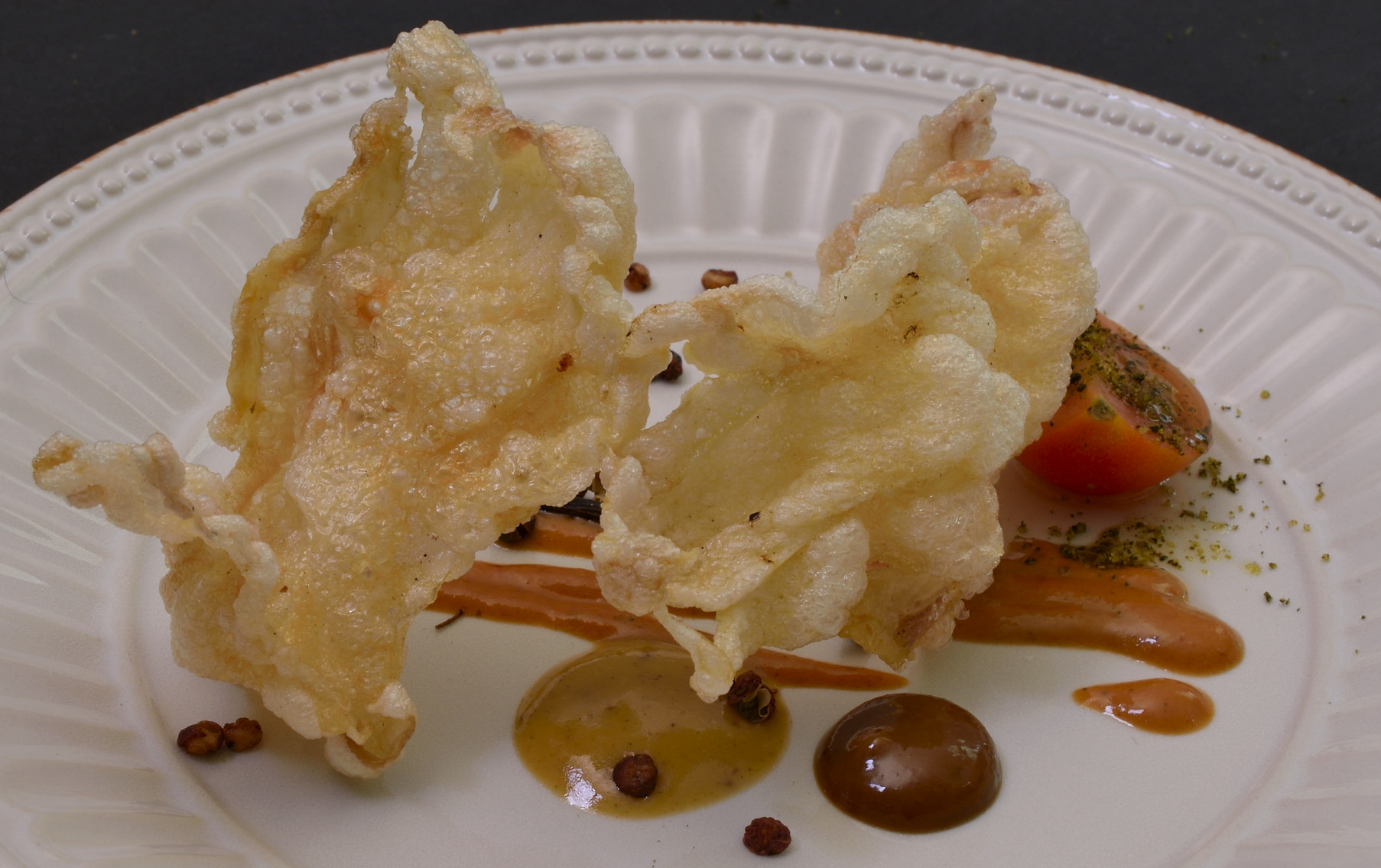 In the picture above: served with Sichuan red peppercorns and assorted tamarind sauces, linked HERE.
In the picture above: served with Sichuan red peppercorns and assorted tamarind sauces, linked HERE. 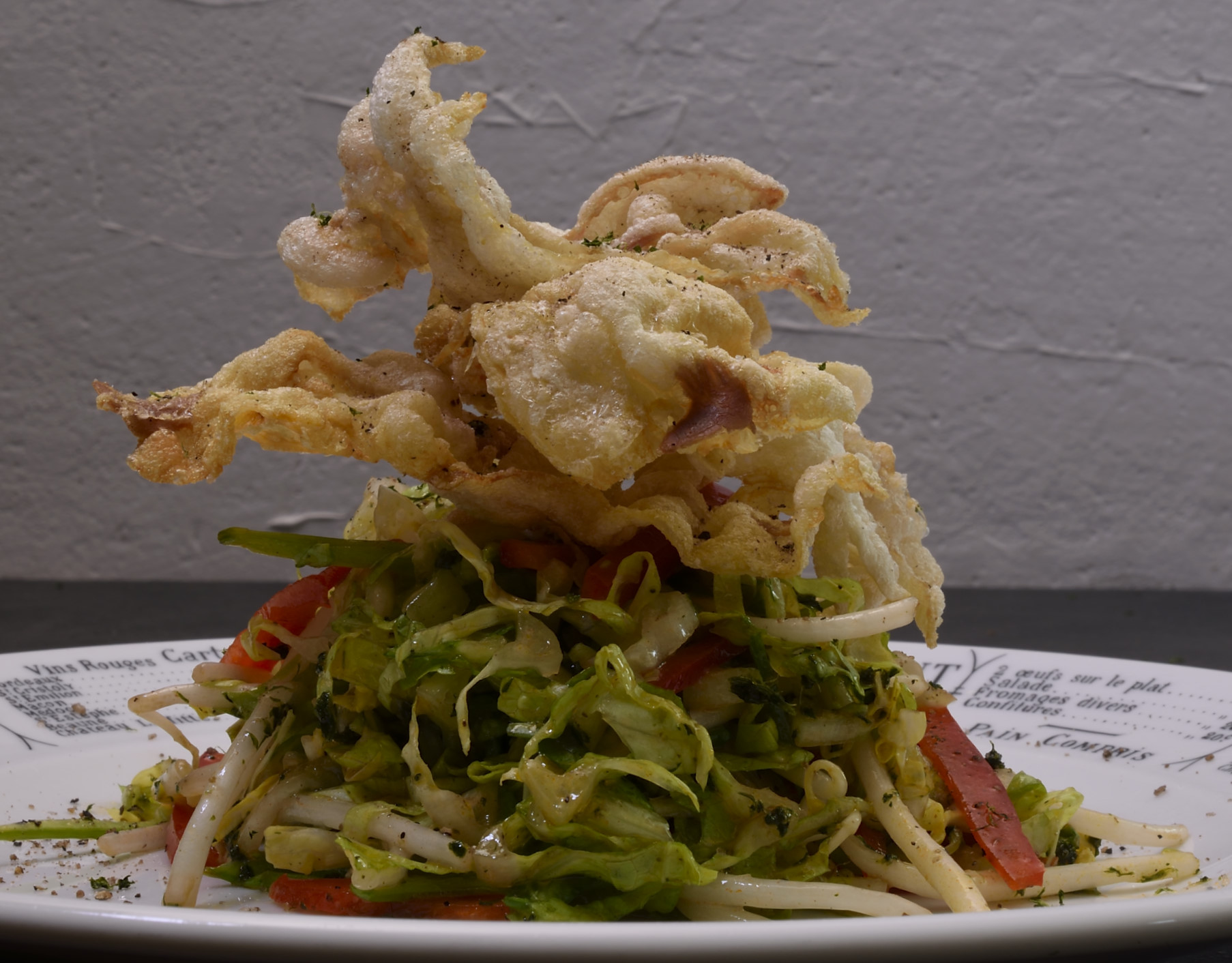 These chicharrones also provide crispness to salads as an alternative to croutons.
These chicharrones also provide crispness to salads as an alternative to croutons. Bonus Sum!
After processing, the tendons can be steamed with soy, ginger, garlic and a pinch of sugar to create a dim sum inspired "tapa."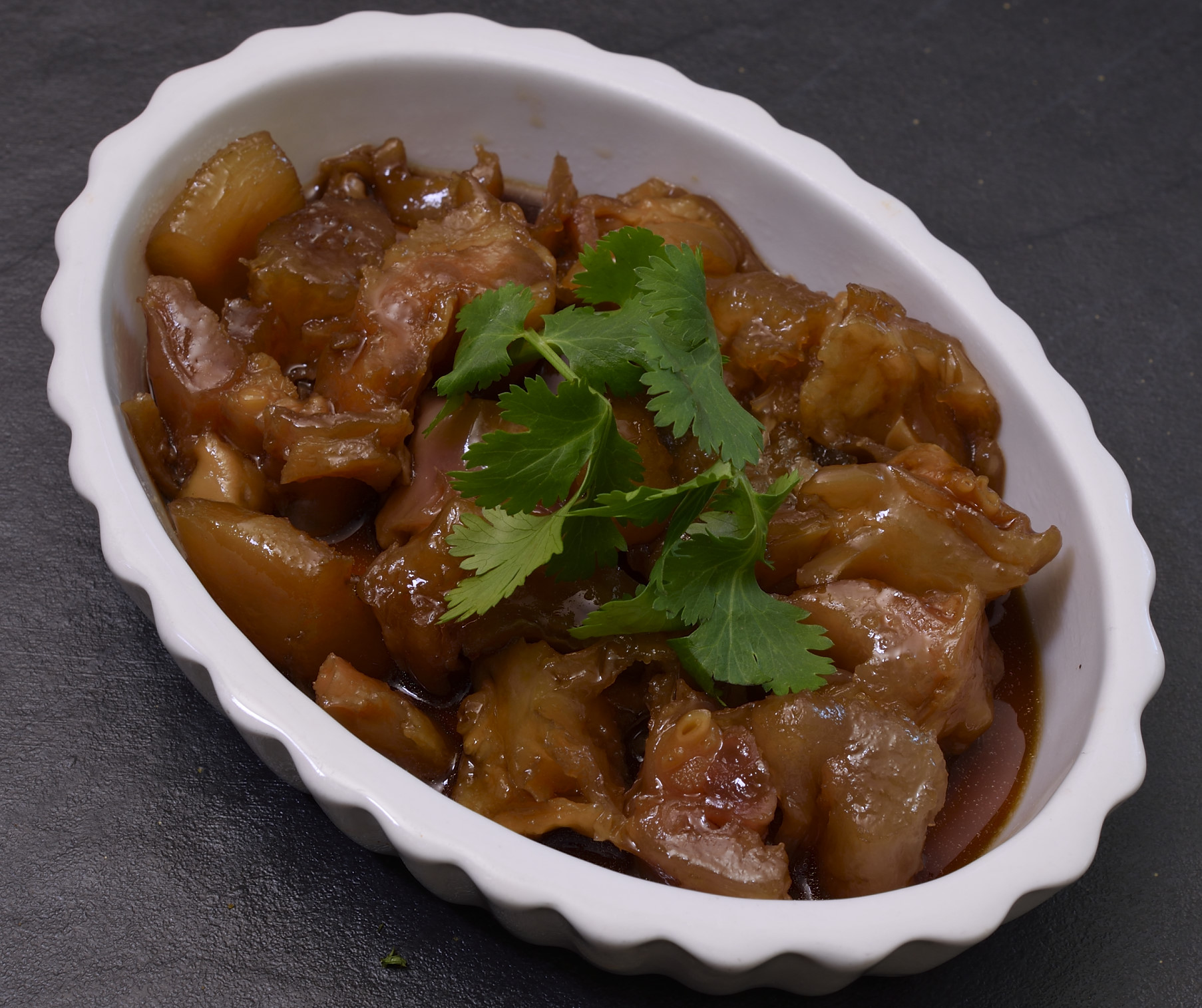 The unique gelatinous texture is unfamiliar to most Western tastes....
The unique gelatinous texture is unfamiliar to most Western tastes.... 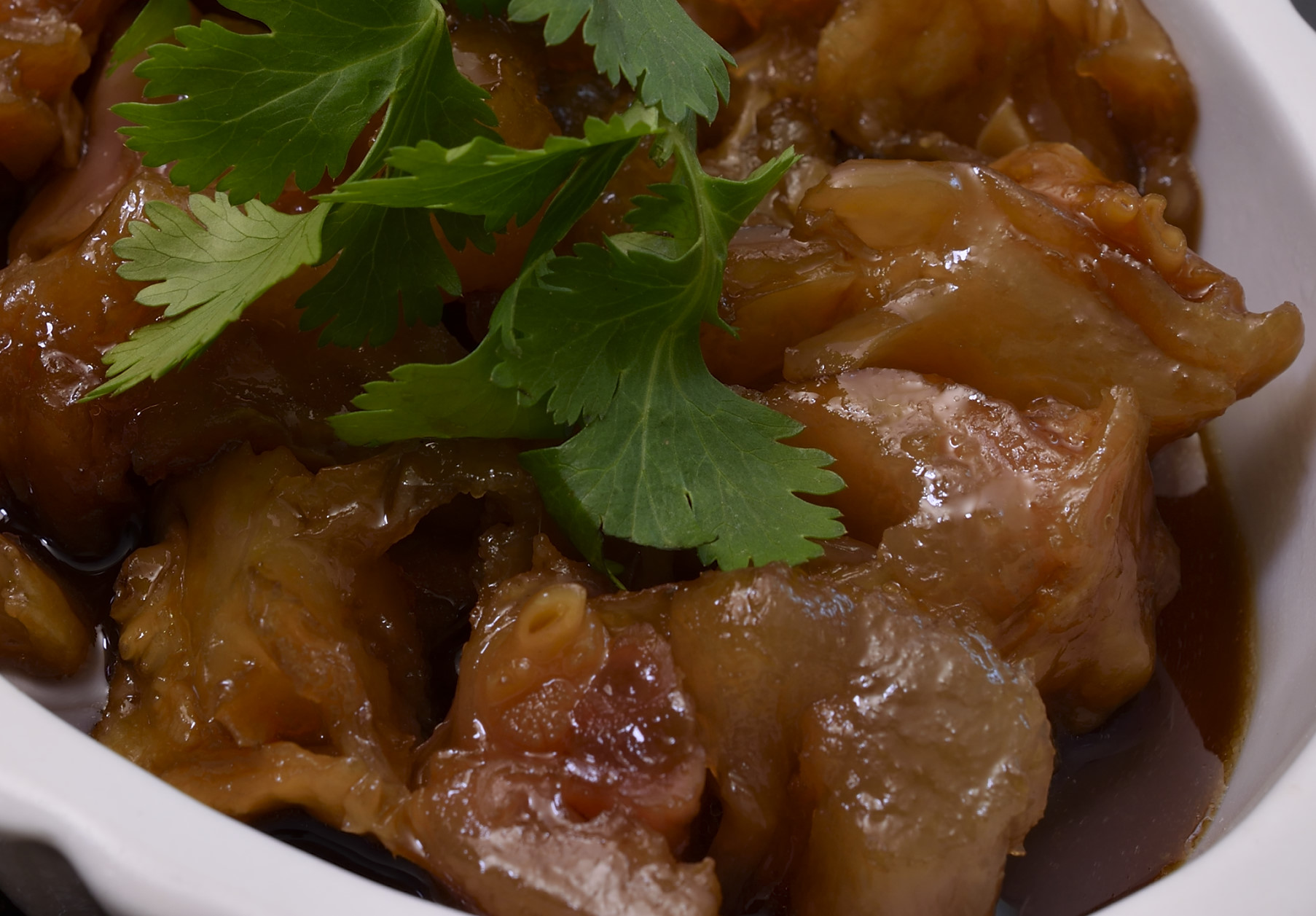 But for the adventurous among us, it is an instant gratification.
But for the adventurous among us, it is an instant gratification. 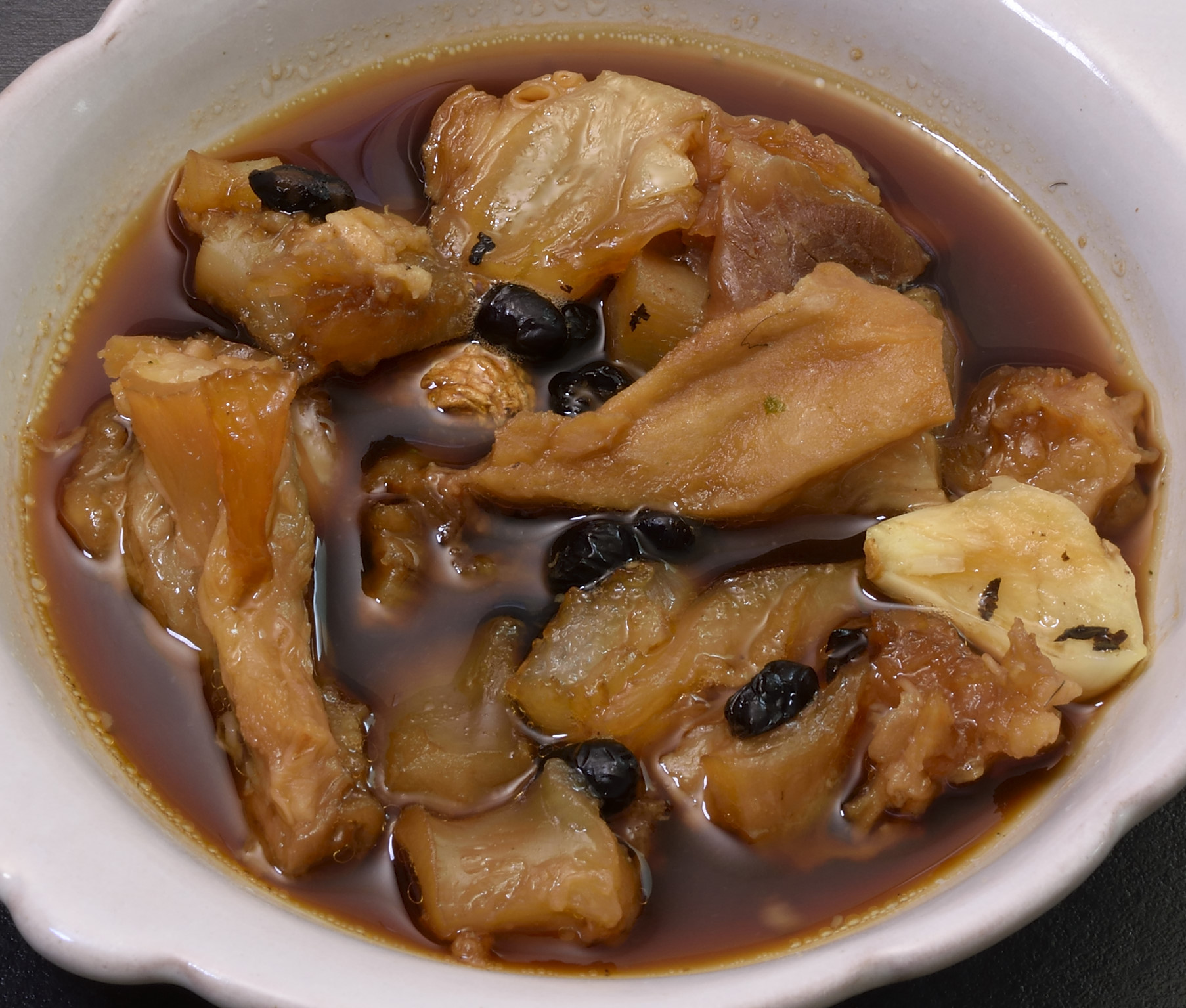 Occasionally steamed with some fermented and salted black beans.
Occasionally steamed with some fermented and salted black beans.